How to connect the built-in gas oven: a detailed briefing with useful tips
Built-in appliances tightly fit into our daily lives. And it became popular due to the fact that it saves the working area, looks much more attractive than outdated stand-alone equipment, and according to technical data it often overtakes it.
Innovations did not go around the oven, so beloved by the hostesses for the opportunity to prepare tasty and healthy dishes. Consider how to connect the built-in gas oven to comply with installation standards and not harm the equipment. In fact, it is not more difficult to install a traditional stand-alone stove, however, some nuances are very important - we will dwell on them separately.
The content of the article:
What you need to know before installation?
Even if you are well versed in regulatory documents and can independently carry out all installation work, the gas service employee will put the final point in the connection process.
It is he who will check the connections for the likelihood of leaks, make sure that the oven is connected correctly and in good working order, and then issue an authorization report.

During preparation and installation, we recommend that you strictly follow the manufacturer's recommendations set out in the instructions and regulatory requirements SNiP 42-01-2002acting instead of SNiP 2.04.08-87.
Remember that compliance with the requirements is the safety of your family, so take any activities related to the installation of gas appliances seriously.
Here are a few rules that will help you take into account the standards and carry out work on connecting the gas built-in oven so that it later becomes comfortable to use:
- The shorter the distance from the oven to the gas pipe, the better. The length of the hose should not exceed 4 m, ideally 1.5-2 m.
- The oven is connected to the pipe only with a flexible eyeliner - a hose that complies with GOST standards.
- The auto ignition system requires an electrical connection. A separate outlet with grounding and an RCD on 16A is required.
- Good ventilation is needed to ensure proper air exchange - you may need to install forced ventilation.
- To prevent gas from entering the living quarters, all connections must be sealed.
Sooner or later have to do gas hose replacement, a shut-off valve or some parts of the oven, so foresee free access to all important gas supply points in advance.

It is undesirable that the wiring and water supply system are in close proximity to a gas pipe or eyeliner - the distance between them should not be less than 20 cm.
Preparation: Power and Ventilation
Not a single gas worker will sign a test report unless he is convinced of the good functioning of the ventilation shaft and a properly installed outlet, therefore we recommend that you resolve the issues of air exchange and power supply in advance.

All gas ovens can be divided into two categories: with and without power cable. If the power cable is leaving the back of the unit, it needs an outlet. If not, then you can find the terminals for installing the wire under the cover of the junction box - there, on the rear panel.

When connecting a gas or electric oven, do not use extension cords, filters on several outlets, tees. The same rule works here - the shorter the cord and the less connections, the better.
The oven belongs to powerful household equipment, therefore it requires the installation of a separate RCD by 16 A. If you are simultaneously involved in replacing wiring and assembling an electrical panel, be sure to leave one place for it on the Din rail in the group of kitchen appliances.
With ventilation, great difficulties also do not arise. Usually it is provided by open vents and valves for ventilation on the one hand and ventilation ducts and shafts on the other. Productive cooker hood It is appreciated, since during cooking it is she who purifies the air of vapors and combustion products.
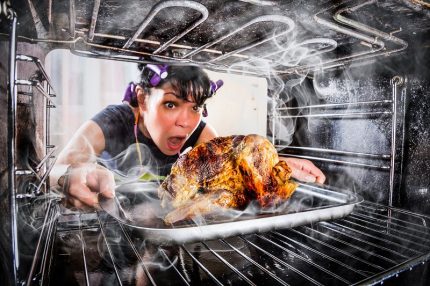
If the hood does not cope or the ventilation does not meet the requirements, then a fan is installed in the shaft opening or in the plastic channel leading to the same shaft, forcing exhaust air to the outside.
Gas hose tips
Simple in essence and not requiring special skill, but a very crucial moment - the connection of a gas oven to a pipe that supplies fuel to an apartment or house. Here it is important to choose the right hose-liner, and tightly connect it to the oven and the pipe.
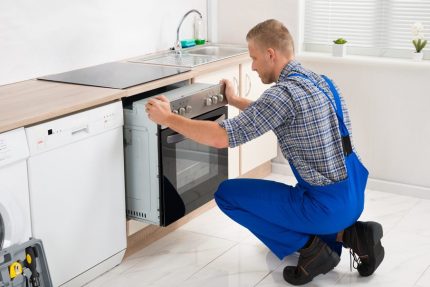
By calling the wizard, you can ask which gas hose better to choose.
Today in stores you can find products that are different in manufacturing material:
- inexpensive rubber-fabric liners with a life of up to 5 years;
- metal-braided rubber hoses, reliable and ready for installation;
- double-layer reinforced PVC hoses;
- bellows tubes.
They may offer an oxygen hose - it seems to be strong and reliable, but do not agree. These products are already banned for use for several reasons, and one of them is relevant specifically for the kitchen. The hose material is destroyed when grease enters, and this is the likelihood of a gas leak with all the tragic consequences.
A few tips for choosing:
Do not forget to buy a dielectric with a hose for a gas pipe and a shut-off valve - if it is not already installed. Note that for the installation of the crane you will have to block the highway, that is, call the gas service worker.
Gas Oven Installation Instructions
The entire installation process can be divided into 3 parts: the 1st is the continuation of the preparation, the second is the direct installation of the built-in oven, the 3rd is the connection of the oven to the gas supply line. We will analyze everything on the shelves so that as few questions as possible remain on the topic of how to properly install and connect the oven to the gas in the living room.
Stage # 1 - unpacking and learning the instructions
Many neglect the first stage, although the serviceability of the equipment is one of the conditions for its proper functioning in the future.
To make sure that the oven is ready for installation, unpack it and check from all sides, namely:
- The front side, on which the control panel and the oven door are located - they should not be scratched, cracked, dented or stained. It is not recommended to remove the protective film before installation.
- The back wall, where on the parts visible or hidden under the covers there are elements for connecting the unit to electricity and gas.
- Internal surfaces located behind the door.
- Protruding elements - mechanical knobs for adjusting power and setting modes, door handle.
Then take the data sheet and check the complete set: baking sheets, grills, grill equipment, installation and mounting kit.
The installation kit is a pair of guides and several self-tapping screws with washers. Do not be surprised - for the installation of modern technology a large number of fasteners are not required.
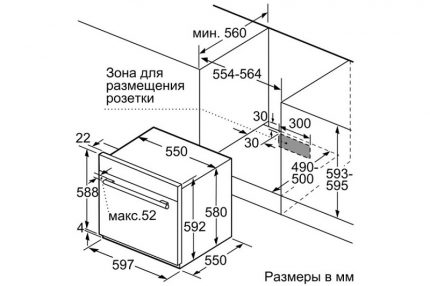
After making sure that everything is in order and in place, you can deal with connecting the hose, wires and mounting the cabinet into a niche - usually these events occur simultaneously.
Stage # 2 - preparing a niche for installation
The dimensions of the ovens are standard, as are the kitchen sets, but you need to make sure that the dimensions of the prepared niche and the cabinet coincide. For this, the oven is inserted into a niche - it must enter tightly, but with a small gap for mounting on the rails.
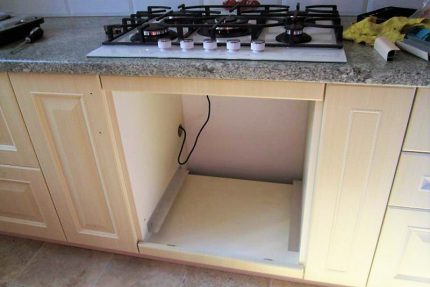
According to the drawing, the oven is installed either directly on the bottom of the niche, or on the guides fixed on the sides or on the top panel - on the recommendation of the manufacturer. The final touch is fixing the case with self-tapping screws so that during operation it does not lose stability.
The electric wire and hose are connected before the housing is finally fixed.
Stage # 3 - Connect and Test
Tools and materials may be required:
- screwdriver;
- gas key;
- adjustable wrench;
- fum tape;
- soap solution.
By standards, for oven settings A separate pipe outlet with a tap is required to shut off the gas supply in the event of a repair or accident. The liner is connected through a dielectric insert, which provides additional protection.
How to install a dielectric correctly - in the photo gallery:
At the other end, a hose is attached to the oven. Note that the length of the hose should be enough for a free connection at the moment when the unit is not yet inserted in a niche - that is, the inlet must be long enough. This is one of the features of the installation of built-in appliances.
Testing is carried out in the old "old-fashioned" way: they cover the compound with a soapy solution and gas is supplied. If there are no bubbles at the docking point, then the connection was successful.
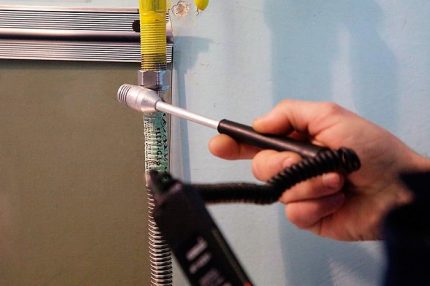
In the opposite case, you will have to deal with a more thorough sealing of the joint or still wait for the master and entrust him with this work. After connecting the gas, you can switch the electrical wires or simply insert the plug of the cabinet into a pre-installed outlet.
The last step is to install an already connected oven in a cabinet, tighten the fasteners, and yet another finish test.
Conclusions and useful video on the topic
Video # 1. Tips from the user who independently connected the oven:
Video # 2. Installation recommendations from the manufacturer Hans:
Video # 3. About the connection order:
And the last recommendation: be sure to act in tandem with a representative of the gas service. If the connection passes "past" Gorgaz and an accident occurs that results in damage to health or damage to property, you will face considerable fines.
Sanctions are possible during the next scheduled inspection - if the installation of new connected equipment is not fixed and not documented. Follow the law and you are safe!
Please write comments, ask questions and post a photo on the topic of the article in the form below. Tell us about your experience in connecting a gas oven. It is possible that the technological details of the process known to you are very useful for site visitors.

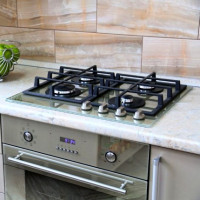 Gas hob connection: safe connection instruction
Gas hob connection: safe connection instruction  How to insulate a gas cylinder on the street in winter: the best ways to warm
How to insulate a gas cylinder on the street in winter: the best ways to warm  Laying a gas pipeline in a case through a wall: the specifics of a device for introducing a pipe for gas into a house
Laying a gas pipeline in a case through a wall: the specifics of a device for introducing a pipe for gas into a house  DIY gas stove connection: how to install a gas stove in an apartment step by step
DIY gas stove connection: how to install a gas stove in an apartment step by step 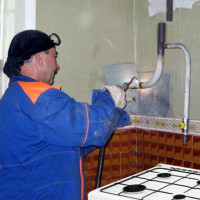 How to transfer a gas pipe in an apartment: transfer rules and location tips
How to transfer a gas pipe in an apartment: transfer rules and location tips 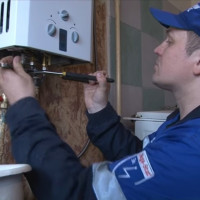 What to do when water gets into the gas pipe: a review of options for resolving the problem and possible consequences
What to do when water gets into the gas pipe: a review of options for resolving the problem and possible consequences  How much does it cost to connect gas to a private house: the price of organizing gas supply
How much does it cost to connect gas to a private house: the price of organizing gas supply  The best washing machines with dryer: model rating and customer tips
The best washing machines with dryer: model rating and customer tips  What is the color temperature of light and the nuances of choosing the temperature of the lamps to suit your needs
What is the color temperature of light and the nuances of choosing the temperature of the lamps to suit your needs  Replacement of a geyser in an apartment: replacement paperwork + basic norms and requirements
Replacement of a geyser in an apartment: replacement paperwork + basic norms and requirements